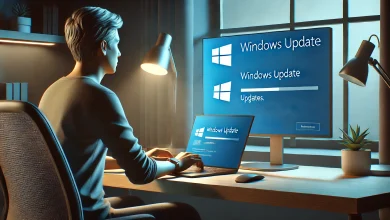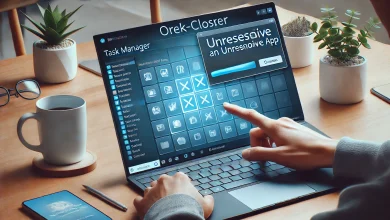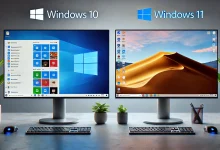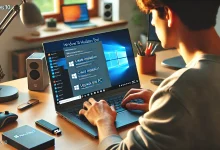Screens for Windows: The Ultimate 2025 Guide to Choosing the Best Window Screens
Screens for Windows
Introduction: Why Window Screens Still Matter in 2025
In the age of smart homes and energy-efficient glass, window screens remain an essential part of household design. These simple mesh additions serve multiple purposes: keeping insects out, improving ventilation, protecting from debris, and even offering privacy. Whether you’re replacing old screens or buying new ones, the market in 2025 offers more choices and smarter materials than ever before.
In this guide, we’ll explore the types of window screens available, the best materials, customization options, and what to consider when purchasing or upgrading your home’s window screens.
Benefits of Installing Screens for Windows
Before diving into the types and options, let’s highlight the main reasons why window screens are still a valuable investment:
🛡️ 1. Insect Protection
Screens allow you to keep windows open for fresh air without inviting in flies, mosquitoes, or other pests.
🌬️ 2. Better Airflow
Screens provide an extra barrier while still allowing natural ventilation, reducing reliance on fans or air conditioning.
🔒 3. Security and Child Safety
Some screens, especially metal ones, deter break-ins or prevent small children from pushing through open windows.
🌞 4. UV and Glare Reduction
Advanced screen materials can block a percentage of harmful UV rays, reducing glare and protecting furnishings.
👀 5. Privacy Enhancement
Privacy mesh screens limit visibility from the outside while maintaining a clear view from the inside.
Types of Screens for Windows
Not all window screens are the same. The right type for your home depends on your climate, usage needs, and budget.
1. Standard Fiberglass Screens
Most common and affordable
Lightweight and flexible
Resistant to corrosion and rust
Great for everyday use
Lifespan: 5–10 years
2. Aluminum Screens
Stronger and more durable than fiberglass
Better suited for high-traffic or high-wind areas
Resistant to sagging
Can oxidize over time (white spots)
3. Pet-Resistant Screens
Made with thicker polyester mesh
Designed to withstand claws and bites
Ideal for homes with cats or dogs
4. Solar Screens
Specialized mesh blocks up to 90% of UV rays
Keeps homes cooler in summer
Helps lower energy bills
5. Retractable Window Screens
Roll away when not in use
Great for aesthetics and easy cleaning
Often paired with casement or large windows
6. Security Screens
Made from stainless steel or heavy aluminum mesh
Designed to prevent break-ins
Can double as hurricane or storm protection
Choosing the Right Screen Material
When selecting window screens, the mesh material matters as much as the frame. Here are the most common mesh materials:
| Mesh Material | Best For | Pros | Cons |
|---|---|---|---|
| Fiberglass | Standard home use | Cheap, flexible, easy to install | Can tear easily over time |
| Aluminum | Windy areas, long-term use | Durable, won’t sag | Susceptible to corrosion |
| Polyester | Homes with pets or kids | Stronger, resists damage | Slightly more expensive |
| Stainless Steel | Security or storm-prone regions | Extremely strong and rust-resistant | High cost, heavier |
| Copper/Bronze | Decorative or upscale homes | Elegant appearance, ages well | Very expensive |
Window Screen Sizes and Customization
Most manufacturers offer standard sizes, but if your windows are non-standard, custom window screens are readily available in 2025.
Common Customization Options:
Frame color and thickness
Mesh type (UV protection, pet-safe, etc.)
Shape (arched, circular, etc.)
Opening style (slide, roll, retract)
Tip:
Always measure your window width, height, and depth carefully before ordering or replacing screens.
Best Window Screens in 2025 (Brands and Recommendations)
Here are some top-rated screen brands in 2025 for both DIY users and homeowners looking for professional installation:
🏆 1. Phifer
Known for durable fiberglass and solar screens
Pet-resistant mesh line available
🏆 2. Andersen
Premium window company with integrated screen solutions
Retractable and custom options
🏆 3. Pella
Offers screens with advanced UV blocking and security features
🏆 4. Saint-Gobain Adfors
High-quality mesh for both homes and businesses
Maintenance Tips for Long-Lasting Screens
To extend the life of your window screens:
Clean regularly with soapy water and a soft brush
Avoid harsh chemicals or pressure washers
Inspect yearly for tears, warping, or corrosion
Store removable screens indoors during harsh winter months
DIY vs Professional Installation
✅ DIY is Best If:
You have standard-sized windows
You’re using snap-on or magnetic screens
You’re comfortable with tools
👷 Professional Help is Best If:
You need custom-shaped screens
You’re installing security or storm screens
You’re upgrading multiple windows or a whole home
Cost of Window Screens in 2025
| Screen Type | Estimated Cost (Per Window) |
|---|---|
| Fiberglass | $15 – $40 |
| Aluminum | $25 – $60 |
| Pet-Resistant Mesh | $40 – $75 |
| Solar Screens | $50 – $100 |
| Retractable Screens | $100 – $300 |
| Security Screens | $150 – $500 |
Prices vary based on size, mesh type, and customization.
Environmental and Energy Considerations
Modern window screens contribute to sustainability in subtle ways:
Solar mesh reduces indoor cooling needs
Increased airflow cuts down on AC usage
Screens extend window lifespan by blocking debris and UV rays
Choose eco-certified materials or brands committed to recyclable products if environmental impact is important to you.
Conclusion: The Right Window Screen Makes a Difference
Window screens in 2025 are more than just insect barriers—they offer security, comfort, energy efficiency, and even design appeal. Whether you’re replacing torn screens or building a new home, choosing the right type of screen for your windows is crucial.
Evaluate your climate, household needs, and budget before selecting the ideal screen type. And don’t hesitate to invest a little more in quality mesh or professional installation—you’ll benefit from better airflow, energy savings, and peace of mind.







